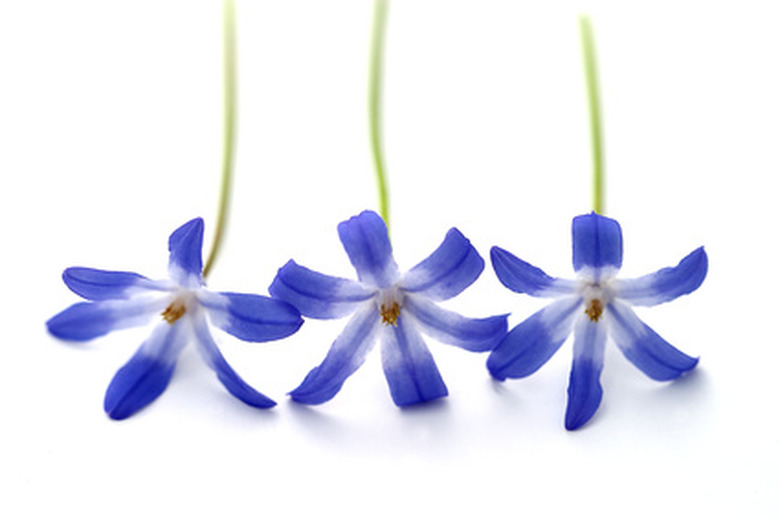Types Of Star Shaped Flowers List
Like the millions of stars that fill the nighttime sky above your yard with beauty and mystery, star-shaped flowers can bring a touch of heavenly glory to your garden beds. Star-shaped flowers come in a variety of sizes and fragrances. Different flowers bloom at different times of the year, so you can have a continual display from these garden stars.
Glory-of-the-Snow
One of the earliest garden bloomers, glory-of-the-snow (Chionodox luciliae) is a member of the lily family. Native to western Turkey, this tiny perennial bulb flowers in March or April, sometimes while the ground is still snow-covered. Only 6 to 9 inches high and 3 to 6 inches wide, glory-of-the-snow has two or three narrow green leaves. Between three and six white-centered lavender-blue star-shaped blooms top its single stem.
- Like the millions of stars that fill the nighttime sky above your yard with beauty and mystery, star-shaped flowers can bring a touch of heavenly glory to your garden beds.
Glory-of-the-snow, says the Missouri Botanical Garden, is a vigorous self-sower. Plant it where it has room to spread. It likes sun to part shade and average well-drained soil. Use it massed in rock gardens or at the base of deciduous trees, where it will provide color before the trees leaf out.
Fringed Bluestar
Fringed bluestar (Amsonia ciliata) blooms as early as glory-of-the-snow, but continues flowering until June. A multi-stemmed perennial of the dogbane family, it stands between 15 and 24 inches high. Narrow, light green leaves–yellow in autumn–ascend the straight stems. Each stem bears an open cluster of several star-shaped light blue flowers.
- Glory-of-the-snow, says the Missouri Botanical Garden, is a vigorous self-sower.
- Use it massed in rock gardens or at the base of deciduous trees, where it will provide color before the trees leaf out.
The Ladybird Johnson Wildflower Center suggests planting fringed bluestar in partial shade and limestone-rich or sandy loam soil. If your soil is too rich, the plants will become invasive. Give fringed bluestar additional water in the summer. Cut it back after it blooms to maintain a bushy shape.
Bowman's Root
Bowman's root (Gillenia trifoliata) is a 2- to 3-foot-tall, shade-loving perennial of the rose family. It has a narrow profile. Two or three stems with three-lobed green leaves grow from a single crown. From April to June, the stems have loose clusters of five-petaled star shaped white or pale pink blooms. The 1-inch-wide flowers' scarlet calyxes (outer coverings) remain on the stems to provide color after the blooms have faded.
- The Ladybird Johnson Wildflower Center suggests planting fringed bluestar in partial shade and limestone-rich or sandy loam soil.
- The 1-inch-wide flowers' scarlet calyxes (outer coverings) remain on the stems to provide color after the blooms have faded.
The Lady Bird Johnson Wildflower Center recommends planting Bowman's root in a partly shady to shady location with rocky, acidic, well-drained soil. It tolerates limestone and does best in soil rich in organic material.
